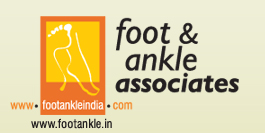

|

| Problems of The Insertion of The Achilles Tendon | |
The Achilles tendon attaches to
the heel bone (the calcaneus) over a very broad area. Although the
tendon is only approximately one-centimeter thick, its attachment
spreads over a three and a half-centimeter area on the calcaneus.
Recurrent stress on the tendon where it attaches (the insertion)
leads to inflammation, microscopic tearing of the tendon, swelling
and pain. This can be associated with inflammation of the space
between the tendon and the calcaneus, called the retrocalcaneal
bursa. At times the back of the heel can begin to enlarge and get
quite thick. The thickening is partly as a result of bone spurs
that may develop on the back of the calcaneus. These can then grow
up into the substance of the Achilles tendon causing further wear
and tear of the tendon. |
|
 |
|
| This is the typical appearance
of a painful heel from a bump on the back of the heel bone. This
is aggravated by rubbing from shoes (in some countries this condition
is called a pump bump because of the "pump" type of shoe). This is the appearance of the back of the heel on an XR taken from the side view. The abnormal bone projecting into the Achilles is easy to see, and the normal heel bone contour is shown with the dotted line. |
|
Treatment of the insertion of
Achilles tendonitis begins with rest, elevation of the heel on the
sole of the shoe and physical therapy treatments. All of these are
designed to decrease the inflammation on the tendon. Inflammation
occurs with every step we take when walking because of the stretching
of the Achilles tendon. Padding of the shoe, elevated heels and
physical therapy treatments are commonly successful. Cortisone (steroid
injection) should not be used to treat inflammation of the insertion
of the Achilles tendon since this can lead to further deterioration
of the tendon itself. |
 |
| If conservative treatments are not sufficient, surgery is performed. The surgical procedures performed are varied and are determined by the underlying problem. For example, if the bone on the back of the heel is very prominent and is digging into the Achilles tendon, the bone is trimmed and shaved. | |
 |
|
Here you see the back of the heel
and the bump on the heel bone shown on the left. Right: A bone chisel
is used to remove the bump completely. |
|
 |
|
The appearance of the heel after
the bone has been cut. |
|
 |
|
The bone on the back of the heel
has been removed. On the XR on the right, note a white object in
the bone. This is a small bone screw that is used at times to re-attach
the Achilles in severe cases where a lot of bone has to be removed. Alternatively, the tendon may need to be repaired if there is tearing of the tendon where it attaches to the bone. In addition to repairing the tendon, a transfer of a tendon is used (transferring the tendon to the big toe, called the flexor hallucis longus). This tendon transfer adds strength and support to the weakened damaged tendon. |
|
| ©
Foot & Ankle Associates. All Rights Reserved. |
Website Powered
by : Sterling Softwares |
